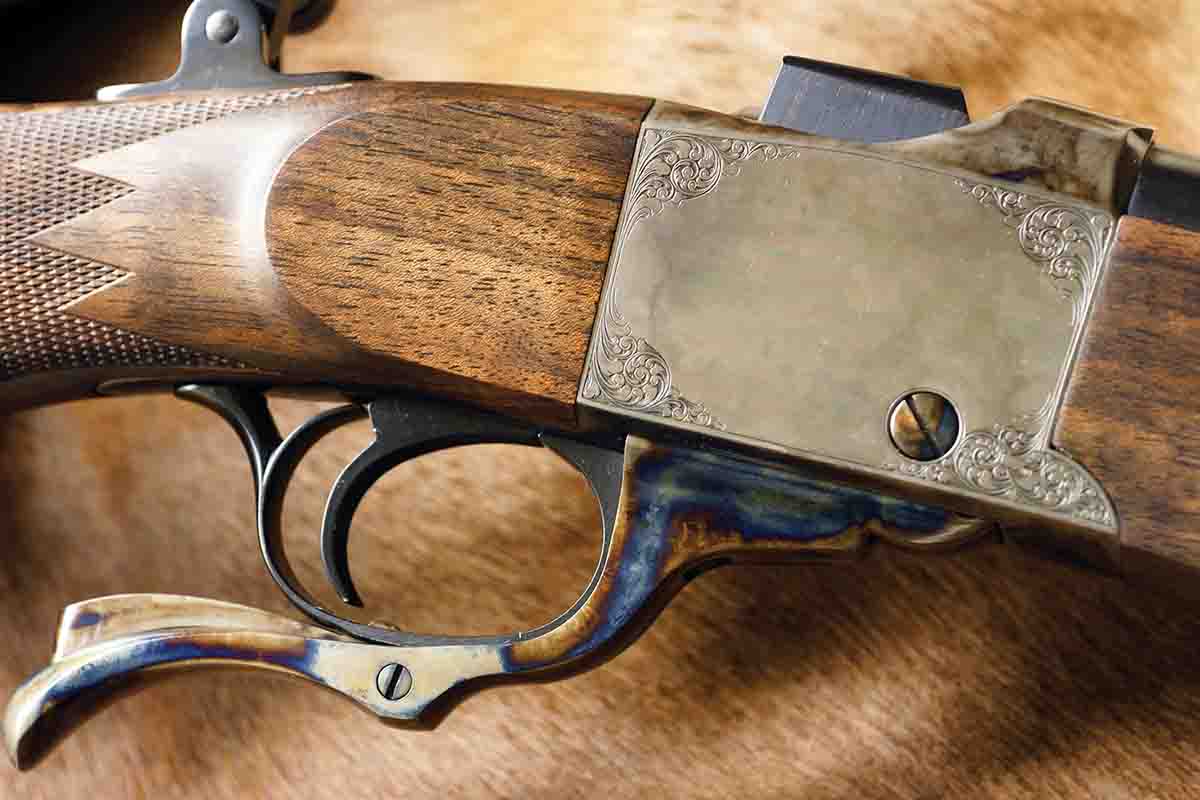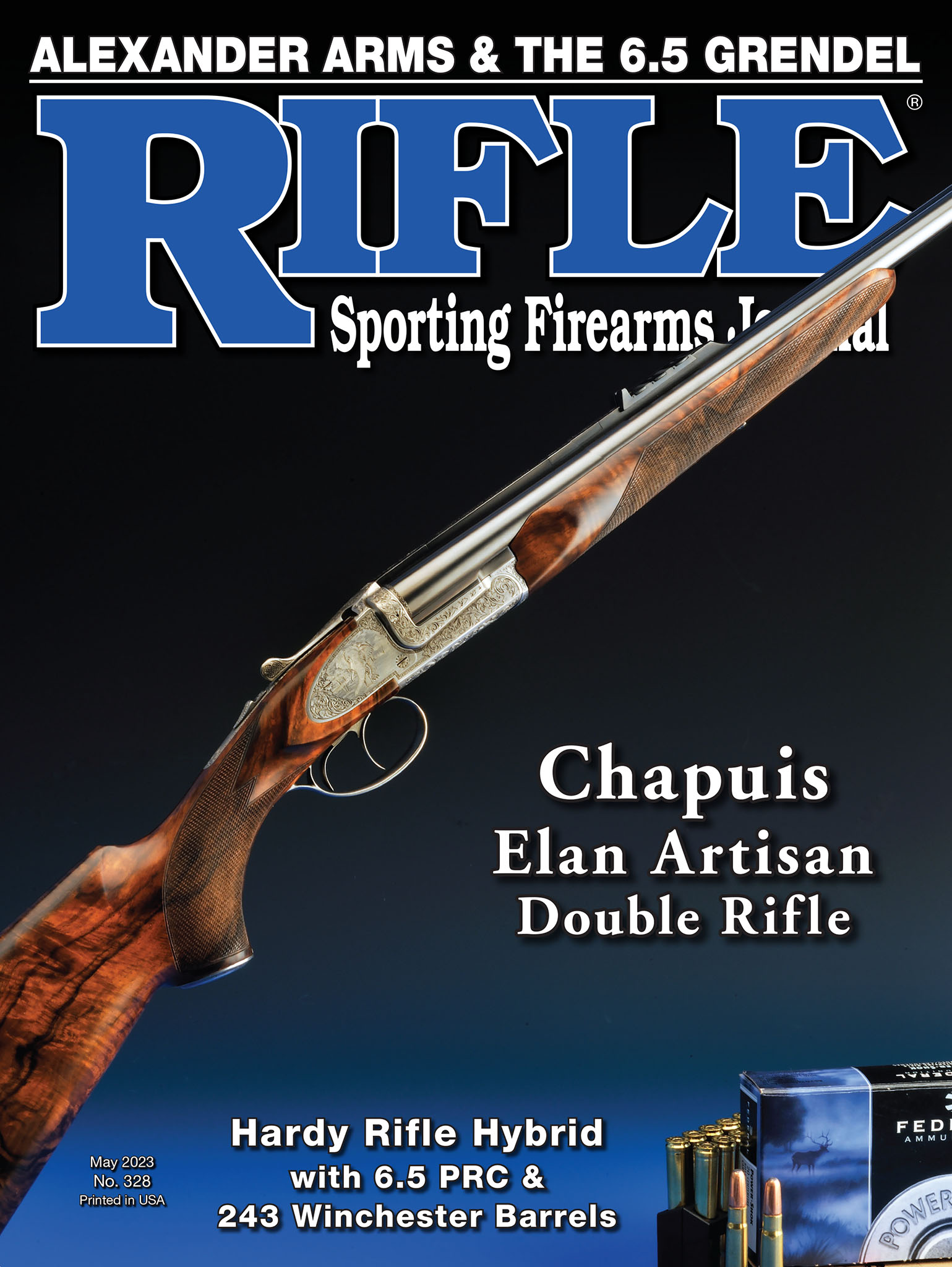Walnut Hill
Twenty Years On
column By: Terry Wieland | May, 23

“I want you to write something for me,” Dave growled. “Happy to,” I replied. “What?”
“I need a piece on these crazy Canadian gun laws,” he said, and then added “Have some fun with it.”
Well, then as now, Canada’s firearms laws were easy to laugh at – easy, that is, unless you were affected by them, and were watching helplessly as the efforts of a half-century, such as collecting all the variations of the Lee-Enfield, were about to go up in smoke.
After the first one, Dave would approach me regularly for an update, and I would duly deliver another 2,000 words on the latest insanity. After about 2010, things settled down in Canada. The long-gun registry, which was the centerpiece of the sweeping legislation of the 1990s, fell apart, first because gun owners stopped taking it seriously, and finally when a Conservative Party government in Ottawa abolished it entirely and told the Royal Canadian Mounted Police (RCMP) to destroy all the records.
At that point, here was the situation. There was special legislation for handguns, which were classified as either restricted or prohibited. Some rifles, such as ARs and the AK-47, were also restricted. Every gun owner or buyer had to have a Possession and Acquisition Licence (PAL), and these were also classified by type, with owners of “prohibs” allowed to keep their guns and trade them among themselves. To get such a provision, you had to own a prohib on the day the legislation was introduced in 1993. In effect, it was a “grandfathering” clause.
A prohibited handgun was one with a four-inch barrel or less, or one in either 25 or 32 caliber. Fortunately, I qualified on both counts, so I could keep my S&W Mountain Gun (a 44 Magnum) and my S&W Model 16-4 (a 32 H&R Magnum target revolver) as well as the common-or-garden High Standard 22s that I owned and loved, then as now.
If this is already starting to make no sense to you, let me give you an insight into how the 25 and 32 made it onto the prohib list. In a committee meeting in Ottawa, comprised mostly of bureaucrats with little knowledge of guns, politicians with even less and one or two token representatives of the gun business or shooting clubs, one of the bright lights opined that “since no one uses them (25s and 32s) we might as well ban them.” Which they did.
This story was related to me, with a shaking head, by a member of the committee. So, for example, a 32 semiauto that accepted only 32 Longs with wadcutter bullets, used only for Olympic centerfire competition and one of the least offensive guns on the face of the earth, was suddenly outlawed. Henceforth, Canada could have no shooters competing in the Olympics or international matches because no new shooter (i.e. one without a prohib licence) could acquire a match pistol.
When the Liberal Party was returned to power in 2015, under its cringe-inducing leader, Justin Trudeau – intent on becoming as much a national embarrassment as his mother, the infamous Maggie Trudeau, had been in the 1970s – it was determined to pass new laws on gun ownership and use, seizing on any excuse to ban this, or restrict that. One Liberal Party member of Parliament (MP) said at the time, “By the time we’re through, there’ll be nothing but single-shots.” Well, as it turned out, there may not even be many of those: In the latest round of legislation, now sitting before Parliament waiting for a final vote, one of the rifles on the 306-page list of banned items is the Ruger No. 1.
The thinking behind this, if you can call it thinking, defies belief. In the round of gun restrictions brought in three or four years ago, they decided to limit maximum muzzle energy to 10,000 joules (7,375 foot-pounds). The target was the 50 BMG, which is regarded with fear and awe by non-shooting politicians, but the collateral damage was the 460 Weatherby. It, too, exceeded the new limit and was banned.
Now, the Weatherby Mark V rifle in all its forms, as well as the Ruger No. 1 and No. 3, are to be banned because they can be “readily rebarreled” to 460 Weatherby. Readily? By whom?

The Liberal Party members are attempting to ban the guns on their 306-page list through a kind of legislative sleight-of-hand, in which an amendment is added to a bill that has already passed two readings, and hence, will not be subjected to public examination. The amendment was moved by a backbench (i.e., non-cabinet minister) member who has been touted as a “former senior police officer” and would, hence, know what he was talking about.
Senior? In 30 years, on three different police forces, Paul Chiang (Chinese extraction, born in Pakistan, immigrant to Canada) rose to the dizzying rank of sergeant. In most forces, if you don’t rise above sergeant after 10 years, you’re going nowhere. I suspect his list was compiled for him by some anti-gun zealot of a bureaucrat, and that he was chosen to introduce it because any criticism of him would invoke accusations of anti-immigrant racism.
But all is not yet lost.
First, the Liberal Party does not have a majority in Parliament. Their minority government relies on the support of the New Democrats, a socialist party, many of whose ridings are rural, and many of whose supporters are union members – hunters and gun owners. The rural members have already demanded a non-confidence motion, which could bring down the government.
Four provincial governments – Alberta, Saskatchewan, Manitoba and New Brunswick – have said they will not enforce the law if it is passed, and since they run the police (other than the Royal Canadian Mounted Police) this is significant. At least two are preparing legislation to allow a vote on secession from Canada, being fed up to the teeth with Trudeau and his ilk deciding what is good for everyone and imposing his crackpot socialist-woke views.
The Council of First Nations, the umbrella body for all the native tribes in Canada, opposes the bill in its entirety, as do the governments of the northern territories including the Yukon, Northwest Territories, and Nunavut. While Ontario (the largest province) has a Conservative Party government, it needs to be a little circumspect, because without anti-gun Toronto, no party can form a government. Their opposition is likely to be behind the scenes. Newfoundland depends on hunting for food as well as tourist income, but since the province lives largely on handouts from Ottawa, it is also going to be – shall we say – tactful.
With this bill and its ridiculous amendment, the Liberal Party has managed to meld together a most unlikely coalition of native people, conservatives, gun owners, Quebec nationalists, and provincial governments.
In Alberta, a province with a strong rural and hunting culture, with a huge oil and gas industry, and a tradition of a conservative government and hatred of Ottawa, there is neither a need nor a desire to be tactful.
The provincial justice minister stated clearly in a public speech that “it is obvious with this bill that (Trudeau and the Liberals’) ultimate goal is the complete prohibition of private gun ownership in Canada.”
Many of us had long suspected it. Now it’s out in the open. Fortunately, the fight ain’t over yet.


